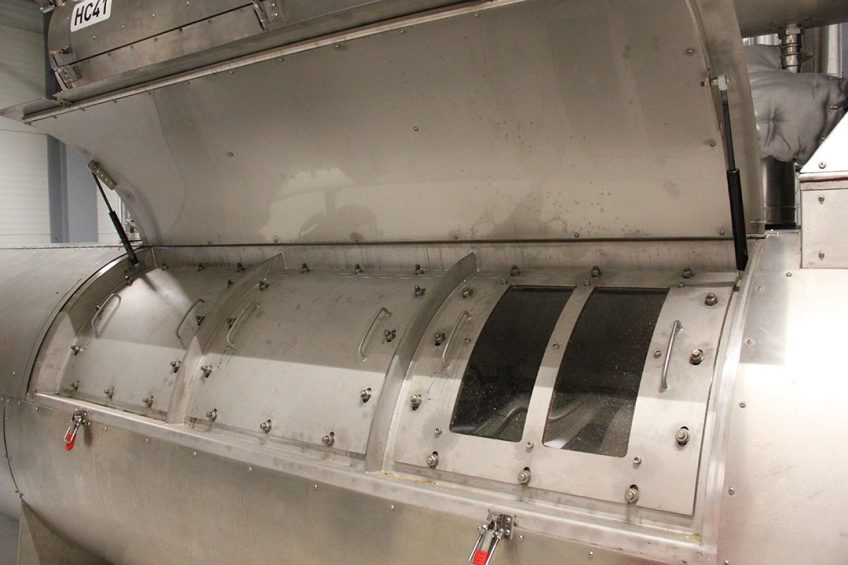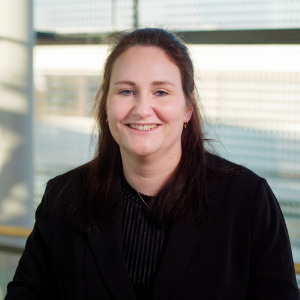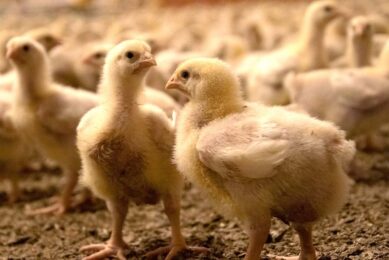Thermal treatment eliminates pathogens in poultry meal

ForFarmers has a new production line. At the production site in Heijen (Netherlands), the company built a 40-metre-high tower containing a heating line to produce poultry feed.
The feed on this line is subjected to controlled heat treatment to kill unwanted microorganisms. The new production line will initially be used to produce poultry meal feeds and pellets for grandparent and parent stock of laying hens and broilers. This feed must meet very strict food safety and hygiene requirements. Since the ban on the use of formaldehyde, poultry feed has mostly been acidified to kill bacteria. For producers of grandparent and parent animals, however, feed must undergo thermal treatment to eliminate pathogens such as salmonella.
The construction of the new line
ForFarmers has been producing this special type of feed for 25 years, but the existing heating line was due for replacement. To absolutely guarantee hygiene, the new line was built in a separate tower. The construction of the tower and the new line was completed within 6 months. The construction of the production line required tight planning and preparation, according to project manager Roy Ottenschot. “Due to extensive preparation we were able to build the heating line like a kind of IKEA-kit; the tower was installed floor by floor and machines were put in place.” The production line mainly consists of new machines; only the pellet mill has been overhauled and placed in the line. Sustainability was also an important consideration in the design. The lighting in the tower is therefore energy-efficient and at the end of the line a filter box purifies all outgoing air.
The line is also equipped with a modern software system, which ensures that the temperature and residence time of the feed in the heater can be set very precisely, according to the wishes of the customer. “The buyers of this feed have very specific wishes for the minimum temperature and the time that the product is in the heater,” says Joost Sparla, Technical & Marketing Director for poultry at ForFarmers. “Those requirements are very strict, but they differ per customer, which makes our operations extra complex.”
 Bird growth boosted through nano minerals in poultry feed
Bird growth boosted through nano minerals in poultry feed
Researchers are claiming that nano minerals in poultry feed can improve broiler growth as well as boosting feed consumption and digestibility.
Heat treatment
The feed is heated with steam, which has several advantages, according to Ottenschot: “Steam-based heating is uniform and quick. This makes it easy to regulate the temperature, which can vary between 82 and 87°C. However, the target temperature is 85°C.” The heating process starts by filling 2 bunkers with 32 tonnes of feed. The next bunker is equipped with an outlet screw with a frequency regulator that ensures that the conditioner contains the correct amount of feed. In the conditioner, 85°C is achieved with the help of steam. When the feed meal has reached the target temperature, the hygienist makes sure that the feed is exposed to the heat treatment for the required time. This can vary between 2.5 and 6 minutes. The temperature and the duration of the treatment can have an impact on the feed ingredients, according to Sparla: “It’s a question of finding a balance between the wishes of the customer and what is acceptable for the feed. For instance, enzymes and vitamins are heat-sensitive and extensive heating can lead to a decline in their activity.”

Cooling the feed
After the heat treatment, the meal is cooled in a double deck cooler to a maximum of 5 degrees above the outside air temperature. According to Ottenschot, cooling is the riskiest step in the process: “Condensation during the cooling process can lead to recontamination. That’s why the air in the cooler is preheated first; this prevents condensation.” After cooling, the product is transported to a mixer in top of the tower. Because of the use of a counter-flow cooler, there is a chance that segregation will occur. This makes it necessary to remix the product. The final product is stored in separate silos to prevent recontamination. Ottenschot: “We ensure that clean feed stays clean.” Sparla adds: “The product is transported to the customer in special trucks; however, when it’s at the farm the feed is no longer protected. So, it’s advisable to use an acid additive in addition to the heat treatment.”
ForFarmers produces around 140,000 tonnes per year of this special poultry feed, as demand for heated poultry meal is also growing in countries outside the Netherlands.
Join 31,000+ subscribers
Subscribe to our newsletter to stay updated about all the need-to-know content in the poultry sector, three times a week. Beheer
Beheer








 WP Admin
WP Admin  Bewerk bericht
Bewerk bericht